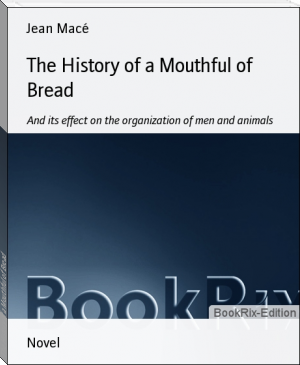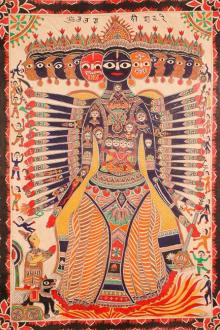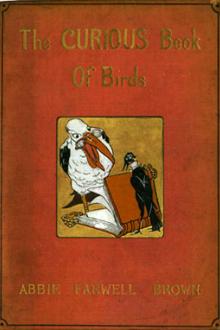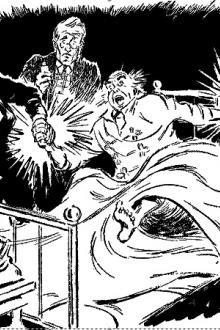The History of a Mouthful of Bread, Jean Macé [best autobiographies to read TXT] 📗

- Author: Jean Macé
Book online «The History of a Mouthful of Bread, Jean Macé [best autobiographies to read TXT] 📗». Author Jean Macé
are included in different systematic divisions of one vast whole, through which it is easy to find one's way, because there is a beginning and an end; and in which animals of the same family are always grouped side by side. Were I to mention all the divisions of this immense classification at once, you would find the account a little long, and not very amusing. We will go through them by degrees therefore, and, to simplify matters, will, throughout the whole, only consider those particular characters which are connected with our special study, the nourishment of life, that is to say: so that you will always find yourself on well-known ground.
I must tell you once for all, however, that it is with this as it is with grammar. Here and there are-and it cannot be avoided-certain exceptional cases which keep protesting timidly against the arbitrariness of rules; but no matter; we must be contented with what we can get, and be grateful into the bargain to those who have given us this skillful classification, at once so ingenious and useful, in spite of its inevitable imperfections. What is impossible is expected of nobody. You could not understand, even if I wished to explain it to you, the amount of science, labor and genius requisite for making out that long list, which, tiresome as it may seem to children, is absolutely beautiful in the eyes of learned men; too beautiful, perhaps, and I will tell you why when we have finished. Meantime, as the best reward we can give to those who have done us some great service is to teach their names to children, I will tell you, before bidding you good-bye, to whom we owe this classification, the details of which I do not enter upon to-day.
In the first place, we owe the method employed in its establishment, the method of natural classification, i.e. , to a learned man of the last century-a learned Frenchman, Bernard de Jussieu-who tried it upon plants; another large flock by no means very easy to put in order, as you may convince yourself any day by studying botany. The man who applied this system to animals was also a learned Frenchman, the clearness of the French mind adapting them peculiarly for that sort of work. And he, too, is one of the glories of that nation. His labors and discoveries gave a perfectly new impulse to the study of nature. It was George Cuvier, whose statue you may see at Montbéliard, if you should ever go there. Not that Cuvier carried through this gigantic work alone, though the credit of it is justly his due, he having directed and inspired it. He was assisted by many. But among his assistants there was one, Laurillard, the most modest, yet the most active of all, whose name I will mention also, because, like the others, more or less celebrated, he has never had his reward. [Footnote: In the earlier editions of this work, there was, in this place, a severe reproach upon Cuvier for not having given proper credit to Laurillard. This reproach I have since learned was unjust. M. Valenciennes himself, one of the most illustrious of the collaborators of the great Cuvier, has written me a letter in which he defends the reputation of his friend with a warm indignation which does honor to both of them; and cites passages in which Cuvier has spoken of Laurillard, and among others, in the third volume of the Ossements Fossiles , p. 32, ed. of 1822.]
It only remains for me, therefore, to let the lash, which I was laying upon the shoulders of another, fall now upon my own, and to deplore the too great facility with which I had credited, without sufficient proofs, an assertion which I had otherwise good reason to believe to be exact-coming to me, as it did, from Montbéliard himself, on the testimony, it is said, of the family of Laurillard. From this avowal, a little painful, I confess, my young readers may learn the inconvenience of rashly condemning others! As I said in the concluding passage, which truth, only too late, now compels me to suppress-"The truth is sure to come out at last."
LETTER XXX.
MAMMALIA. ( Mammals .)
Do you remember of my talking of the vertebral column when I was describing that great artery, the aorta , to which it forms a rampart of defence? I should not have named it without explanation, but that you had only to pass your hand down your back to find out what it was. Now the vertebral column , or backbone, is one of those dominant characters which always carries along with it a train of other points of resemblance in the animals where it is found. It has been chosen, therefore, as the rallying-point of the first great group. I must tell you beforehand that there are four of these groups, four large companies, i.e. , which naturalists have called by various names; as Groups, Sections, Primary Divisions and even Branches; in this case comparing them to four great branches of a tree, going off in different directions from the same trunk.
And, first of all, we have to begin with the group of the
Vertebrata -vertebrata animals-vertebrata being a word which explains itself.
Of course we ourselves belong to this group. In fact, we are at the head of it; but it descends far below us. It goes on to the frog and the fish, and includes the monkey, the ox, the fowl and the lizard; for all these creatures possess the vertebral column. The frog does not appear to be very much like us at first sight; and yet, by virtue of its vertebra, it has its points of resemblance to us, which are worth the trouble of considering. Vertebrated animals are all furnished with a head, containing a brain, which gives its orders to the whole body; they have all an internal skeleton, that is to say, a system of bones linked together, forming a solid base by which all the organs are supported. I was going to add that they have all four limbs; but here the serpent glides in to call me to order, and to hiss at our childish craving for fine-drawn divisions, in perfect order, where there is an exactly proper place for everything. However, each has, without exception, a heart, with its network of blood-vessels; red blood, under its two conditions of arterial and venous; and also a digestive tube, acting, on the whole, pretty much like our own. I do not insist, mind, upon this last point, viz., that of the digestive tube; for we shall see, by-and-by, that it is a character beyond the pale of the primary groups. It is the fundamental character of the trunk itself, which necessarily exists, therefore, in all the groups; and, as I told you in my first letter, you will find it everywhere.
This is-to let you into the secret at once-the theme on which the Great Composer has based all His infinite varieties of animal life; and herein lies the uniformity of the animal creation, that startling uniformity which has given so much offence to many learned men, and which is so obvious that it will strike you of itself, I feel sure. But I reserve this subject to the end of my letters, when you will have heard all, and be able to judge for yourself.
It would be plunging back into confusion to attempt to examine all the vertebrated classes at once. After making a division you must go on. The groups have, therefore, been subdivided into five classes , which we will study in succession, only naming each now: viz. mammals ,
birds , reptiles , fish , and batrachians . Do not alarm yourself at this last name: it is a Greek word, meaning simply frogs.
The mammals are our immediate neighbors. Mammalia are the animals which produce milk. They bring forth their young alive, and give suck to them as soon as they are born. This was your first nourishment, my dear child, so you yourself are a little mammal.
What I said to you in the last letter about the horse, applies pretty nearly as well to all mammals. We shall not, therefore, have any great variations to notice here. Nevertheless, as these are the animals which interest us most nearly, as they are in fact our nearest of kin, so to speak, and those with whom we have the most to do, we will now pass in review the different orders of which their class is composed. I must explain to you that the classes are subdivided into
orders , the orders into families , the families into
genera , the genera into species ; as in armies divisions subdivide into regiments, regiments into battalions, &c. It became necessary, moreover, to make use of special names, in order to make these subdivisions comprehensible, and the following are those which have been adopted.
ORDER 1. Bimana (two-handed) .
Here we may pass on at once, for we have discussed this order enough already. We are bimane ourselves, since we have the distinction of possessing two hands. Yes; that is the pretty title which the professors have been so polite as to give us, instead of leaving us simply our proper name of man. Yet it would have been very easy to do this, seeing that we are the only family, the only genus, and the only species of the order. In railway travelling, people of distinction have a reserved carriage to themselves: so we decidedly deserve an order to ourselves; but that is not quite the same as a separate kingdom. In short, you are a bimane ; so make the best you can of it.
ORDER 2. Quadrumana (four-handed) .
These, as their name indicates, have four hands: two at the end of the arms, and two at the end of the legs; such are the monkeys. There is nothing to remark; they are all alike. Stay; I am wrong, though: there is something, insignificant it is true, but still pointing to deviation. In some the canine teeth are set forward, i.e. project, and are longer than the rest, and some species, as the ape, for instance, have just under their cheeks convenient little pockets, which open into the mouth, and in which they can deposit a reserve of nuts to be devoured at leisure; these are called pouches .
It is a trifle in itself, but we have here a first example of the eccentricities of nature in the construction of animals. At one time she adds a detail; at another she suppresses one. Sometimes she is pleased to enlarge an organ, as in the canine teeth of the monkey; sometimes she reduces it; or perhaps here she makes its construction more simple; there again more complicated: but still it is always the same organ. So the dressmaker shapes the sleeves of a dress, sometimes open, sometimes closed, flat or puffed, plain or ornamented, pagoda-shaped or gigot-formed: but still they are all of them sleeves.
ORDER 3. Cheiroptera (wing-handed) .
I am quite ashamed of offering you such a word as this, my dear child. It was a Greek fancy of the learned men, who would not condescend to use the vulgar name Bats. In the Greek, cheir means hand, and
pteron wing. The Cheiroptera are animals with winged hands; in fact, the fingers which terminate the fore-limbs of the bat lengthen as they spread out to an extravagant extent; and are connected
I must tell you once for all, however, that it is with this as it is with grammar. Here and there are-and it cannot be avoided-certain exceptional cases which keep protesting timidly against the arbitrariness of rules; but no matter; we must be contented with what we can get, and be grateful into the bargain to those who have given us this skillful classification, at once so ingenious and useful, in spite of its inevitable imperfections. What is impossible is expected of nobody. You could not understand, even if I wished to explain it to you, the amount of science, labor and genius requisite for making out that long list, which, tiresome as it may seem to children, is absolutely beautiful in the eyes of learned men; too beautiful, perhaps, and I will tell you why when we have finished. Meantime, as the best reward we can give to those who have done us some great service is to teach their names to children, I will tell you, before bidding you good-bye, to whom we owe this classification, the details of which I do not enter upon to-day.
In the first place, we owe the method employed in its establishment, the method of natural classification, i.e. , to a learned man of the last century-a learned Frenchman, Bernard de Jussieu-who tried it upon plants; another large flock by no means very easy to put in order, as you may convince yourself any day by studying botany. The man who applied this system to animals was also a learned Frenchman, the clearness of the French mind adapting them peculiarly for that sort of work. And he, too, is one of the glories of that nation. His labors and discoveries gave a perfectly new impulse to the study of nature. It was George Cuvier, whose statue you may see at Montbéliard, if you should ever go there. Not that Cuvier carried through this gigantic work alone, though the credit of it is justly his due, he having directed and inspired it. He was assisted by many. But among his assistants there was one, Laurillard, the most modest, yet the most active of all, whose name I will mention also, because, like the others, more or less celebrated, he has never had his reward. [Footnote: In the earlier editions of this work, there was, in this place, a severe reproach upon Cuvier for not having given proper credit to Laurillard. This reproach I have since learned was unjust. M. Valenciennes himself, one of the most illustrious of the collaborators of the great Cuvier, has written me a letter in which he defends the reputation of his friend with a warm indignation which does honor to both of them; and cites passages in which Cuvier has spoken of Laurillard, and among others, in the third volume of the Ossements Fossiles , p. 32, ed. of 1822.]
It only remains for me, therefore, to let the lash, which I was laying upon the shoulders of another, fall now upon my own, and to deplore the too great facility with which I had credited, without sufficient proofs, an assertion which I had otherwise good reason to believe to be exact-coming to me, as it did, from Montbéliard himself, on the testimony, it is said, of the family of Laurillard. From this avowal, a little painful, I confess, my young readers may learn the inconvenience of rashly condemning others! As I said in the concluding passage, which truth, only too late, now compels me to suppress-"The truth is sure to come out at last."
LETTER XXX.
MAMMALIA. ( Mammals .)
Do you remember of my talking of the vertebral column when I was describing that great artery, the aorta , to which it forms a rampart of defence? I should not have named it without explanation, but that you had only to pass your hand down your back to find out what it was. Now the vertebral column , or backbone, is one of those dominant characters which always carries along with it a train of other points of resemblance in the animals where it is found. It has been chosen, therefore, as the rallying-point of the first great group. I must tell you beforehand that there are four of these groups, four large companies, i.e. , which naturalists have called by various names; as Groups, Sections, Primary Divisions and even Branches; in this case comparing them to four great branches of a tree, going off in different directions from the same trunk.
And, first of all, we have to begin with the group of the
Vertebrata -vertebrata animals-vertebrata being a word which explains itself.
Of course we ourselves belong to this group. In fact, we are at the head of it; but it descends far below us. It goes on to the frog and the fish, and includes the monkey, the ox, the fowl and the lizard; for all these creatures possess the vertebral column. The frog does not appear to be very much like us at first sight; and yet, by virtue of its vertebra, it has its points of resemblance to us, which are worth the trouble of considering. Vertebrated animals are all furnished with a head, containing a brain, which gives its orders to the whole body; they have all an internal skeleton, that is to say, a system of bones linked together, forming a solid base by which all the organs are supported. I was going to add that they have all four limbs; but here the serpent glides in to call me to order, and to hiss at our childish craving for fine-drawn divisions, in perfect order, where there is an exactly proper place for everything. However, each has, without exception, a heart, with its network of blood-vessels; red blood, under its two conditions of arterial and venous; and also a digestive tube, acting, on the whole, pretty much like our own. I do not insist, mind, upon this last point, viz., that of the digestive tube; for we shall see, by-and-by, that it is a character beyond the pale of the primary groups. It is the fundamental character of the trunk itself, which necessarily exists, therefore, in all the groups; and, as I told you in my first letter, you will find it everywhere.
This is-to let you into the secret at once-the theme on which the Great Composer has based all His infinite varieties of animal life; and herein lies the uniformity of the animal creation, that startling uniformity which has given so much offence to many learned men, and which is so obvious that it will strike you of itself, I feel sure. But I reserve this subject to the end of my letters, when you will have heard all, and be able to judge for yourself.
It would be plunging back into confusion to attempt to examine all the vertebrated classes at once. After making a division you must go on. The groups have, therefore, been subdivided into five classes , which we will study in succession, only naming each now: viz. mammals ,
birds , reptiles , fish , and batrachians . Do not alarm yourself at this last name: it is a Greek word, meaning simply frogs.
The mammals are our immediate neighbors. Mammalia are the animals which produce milk. They bring forth their young alive, and give suck to them as soon as they are born. This was your first nourishment, my dear child, so you yourself are a little mammal.
What I said to you in the last letter about the horse, applies pretty nearly as well to all mammals. We shall not, therefore, have any great variations to notice here. Nevertheless, as these are the animals which interest us most nearly, as they are in fact our nearest of kin, so to speak, and those with whom we have the most to do, we will now pass in review the different orders of which their class is composed. I must explain to you that the classes are subdivided into
orders , the orders into families , the families into
genera , the genera into species ; as in armies divisions subdivide into regiments, regiments into battalions, &c. It became necessary, moreover, to make use of special names, in order to make these subdivisions comprehensible, and the following are those which have been adopted.
ORDER 1. Bimana (two-handed) .
Here we may pass on at once, for we have discussed this order enough already. We are bimane ourselves, since we have the distinction of possessing two hands. Yes; that is the pretty title which the professors have been so polite as to give us, instead of leaving us simply our proper name of man. Yet it would have been very easy to do this, seeing that we are the only family, the only genus, and the only species of the order. In railway travelling, people of distinction have a reserved carriage to themselves: so we decidedly deserve an order to ourselves; but that is not quite the same as a separate kingdom. In short, you are a bimane ; so make the best you can of it.
ORDER 2. Quadrumana (four-handed) .
These, as their name indicates, have four hands: two at the end of the arms, and two at the end of the legs; such are the monkeys. There is nothing to remark; they are all alike. Stay; I am wrong, though: there is something, insignificant it is true, but still pointing to deviation. In some the canine teeth are set forward, i.e. project, and are longer than the rest, and some species, as the ape, for instance, have just under their cheeks convenient little pockets, which open into the mouth, and in which they can deposit a reserve of nuts to be devoured at leisure; these are called pouches .
It is a trifle in itself, but we have here a first example of the eccentricities of nature in the construction of animals. At one time she adds a detail; at another she suppresses one. Sometimes she is pleased to enlarge an organ, as in the canine teeth of the monkey; sometimes she reduces it; or perhaps here she makes its construction more simple; there again more complicated: but still it is always the same organ. So the dressmaker shapes the sleeves of a dress, sometimes open, sometimes closed, flat or puffed, plain or ornamented, pagoda-shaped or gigot-formed: but still they are all of them sleeves.
ORDER 3. Cheiroptera (wing-handed) .
I am quite ashamed of offering you such a word as this, my dear child. It was a Greek fancy of the learned men, who would not condescend to use the vulgar name Bats. In the Greek, cheir means hand, and
pteron wing. The Cheiroptera are animals with winged hands; in fact, the fingers which terminate the fore-limbs of the bat lengthen as they spread out to an extravagant extent; and are connected
Free e-book «The History of a Mouthful of Bread, Jean Macé [best autobiographies to read TXT] 📗» - read online now
Similar e-books:





Comments (0)